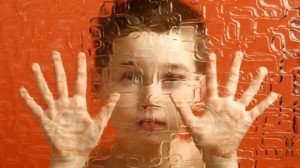 Everyone experiences anxiety at one time or another, but for people with autism, it can be a way of life. Imagine living in a world that you don’t understand or fit into, in a body that tends to be hyper-sensitive to external stimuli. Now imagine that the people closest to you are doing everything in their power to “fix” you, so you are raised from an early age with the understanding that you are somehow “wrong” or “inferior.” Given that this is the way many people with autism experience life, it’s no surprise that they are at greater risk for developing anxiety disorders.
Everyone experiences anxiety at one time or another, but for people with autism, it can be a way of life. Imagine living in a world that you don’t understand or fit into, in a body that tends to be hyper-sensitive to external stimuli. Now imagine that the people closest to you are doing everything in their power to “fix” you, so you are raised from an early age with the understanding that you are somehow “wrong” or “inferior.” Given that this is the way many people with autism experience life, it’s no surprise that they are at greater risk for developing anxiety disorders.
There are many types of anxiety disorders, including panic disorder, obsessive-compulsive disorder (OCD), post-traumatic stress disorder (PTSD), social anxiety disorder, specific phobias, and generalized anxiety disorder (GAD). Anxiety is a normal part of life, but persistent amplified feelings of fear, worry, or obsessive thoughts can adversely affect one’s ability to function in daily life. When these feelings lead to physical or emotional difficulties, they become a disorder.
Many studies have shown a link between autism and anxiety disorders. Researchers at the University of Amsterdam reviewed 31 studies on the link between autism and anxiety disorders, and they found that 40% of children with ASD had at least one co-morbid anxiety disorder. Of these, 30% had a diagnosis of specific phobia, 17% had obsessive-compulsive disorder, 17% had social anxiety disorder or agoraphobia, 15% had generalized anxiety disorder, 9% had separation anxiety disorder, and 2% suffered from panic disorder. This study also showed that children with ASD displayed more severe symptoms than neurotypical children suffering from the same disorder.
People with autism are at a higher risk for anxiety disorders for several reasons. Many have sensory issues, which can make them extremely sensitive to everyday sensory stimuli that would not affect the majority of people. Sounds, lights, textures, tastes, and crowds can all be catalysts for sensory overload, which understandably leads to anxiety. Many individuals with autism stick to rigid routines or refuse to go to unfamiliar places in an attempt to control their environment and avoid sensory overload.
People with autism also have difficulty reading social cues, so interacting with others can be challenging. By the time most individuals with autism reach their teens, they’ve experienced a significant amount of social rejection and failed relationships.
It’s a vicious cycle – young children with autism need opportunities to practice social skills, but as they get older, the rules become less clear, and their peers tend to become less kind about social gaffes. It’s no wonder that so many people with autism choose to withdraw.
Social anxiety disorders can be treated with SSRI medications and behavioral-cognitive therapy. Studies show that medications aren’t always effective for children and young adults with autism. Medications can also have serious side effects, so it’s important to work with a competent physician.
Anxiety disorders can be crippling for people with autism. Cultivating a culture of acceptance and allowance can go a long way towards helping individuals with autism feel safe and able to participate in life to the fullest extent possible.